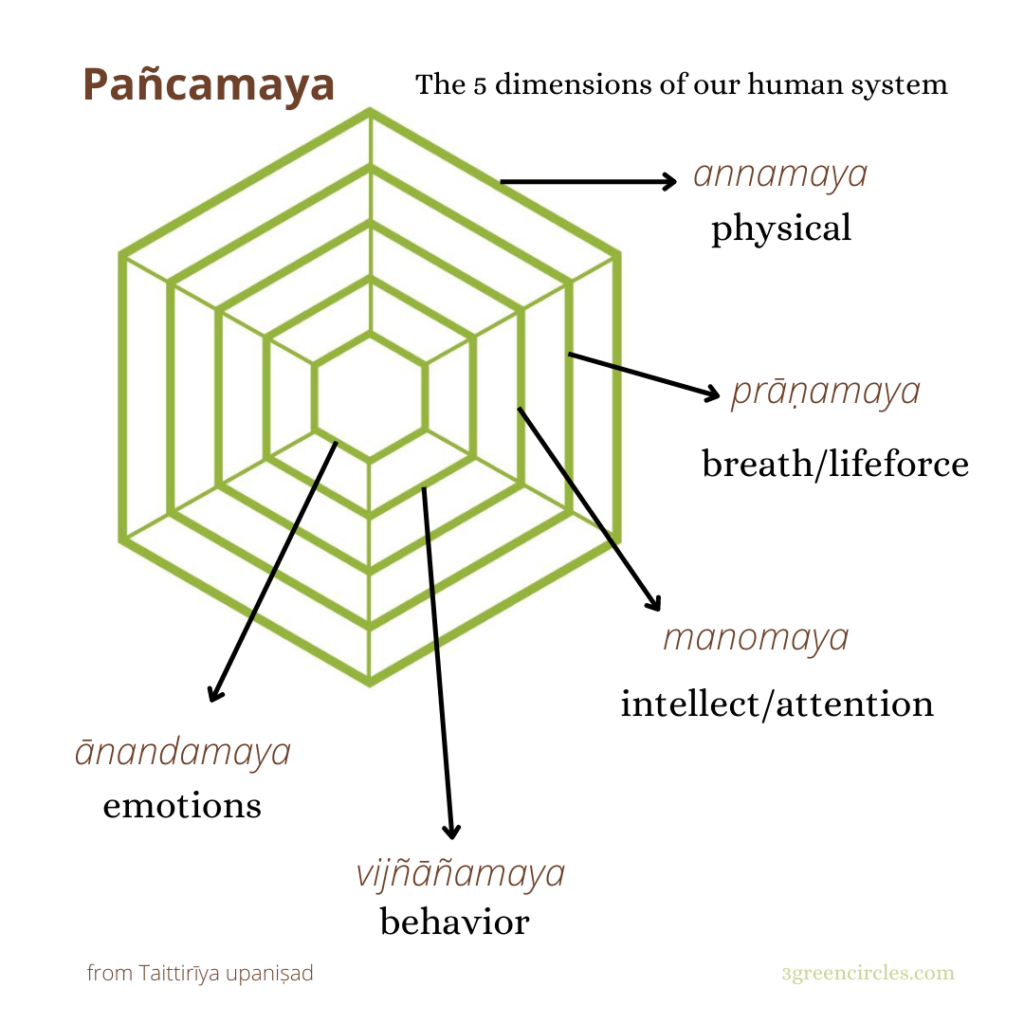
09 May Yoga “Exercises” All Dimensions of our Being
Generally, we feel good after yoga class, right?
Yoga influences the way our system operates on multiple levels. In fact, yoga views our human system in 5 dimensions, called pañcamaya in Sanskrit.

All the dimensions of the pañcamaya are interrelated, inseparable, and interconnected, a truly holistic model of the human system, meaning if we affect any one dimension, the others are also affected.
We have a physical structure (1). The annamaya is our body, which is nourished by food. In Western terms it can be viewed as our anatomy.
We have breath or lifeforce (2). The prāṇamaya is the dimension of our vital energy, the physiology of our human system, the operation of everything.
We have a mind (3). The manomaya is our intellect – what we pay attention to. This is the operational structure of the mind that interprets sensory input and converts it into objects to be experienced deeper into the system.
We have our behavior (4). The vijñāñamaya shows up as our personality. This is the dimension in which we perceive, communicate, behave, and respond to the world around us based on our unique, individual understanding.
And, lastly, we have our emotions (5). The ānandamaya is the deepest dimension, and when operating at its best is connected to a higher power and joy.
So, when we practice postures and breathing, often we feel good at the end of our practice.
Is this physical? Or is it physiological?
Does yoga help us clear our mind as we put our attention on the present moment for a few minutes, which might help us to perceive something anew that is happening in our life? Or does it help us relieve some emotional residue from a previous experience or something coming up in the future?
It’s all of these things.
All dimensions of our human system are interconnected.
Our health is influenced by the foods we take in, by our stress levels and emotions, by our breathing and movement patterns, our lifestyle and mindset about the world around us.
Yoga isn’t going to make our life perfect or turn us into a tranquil monk but taking the time to move and breathe and put our attention on the present moment during a practice does make us less reactive to the fluctuations we are experiencing in our hectic life. Less reactive=Less suffering. Or, put another way, more at ease=more resilient.
A yoga practice is holistic and replenishes the wisdom of our human system – on all levels.
Let’s practice to “exercise” all dimensions of our being.




Pingback:3 Green Circles | Is Yoga Enough to Build Your Bones?
Posted at 02:00h, 08 October[…] I teach and practice and study yoga from the perspective that it is a holistic, therapeutic practice. And I talk and write from this standpoint. Here are some links to a few of my other blogs: much of the controversy is about semantics; and not understanding how deeply important the breath is to an effective yoga practice; and that yoga is not just a physical exercise. […]